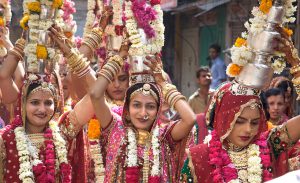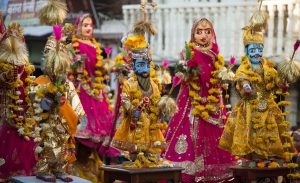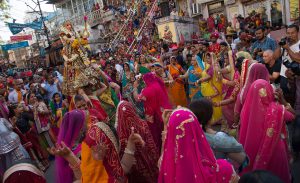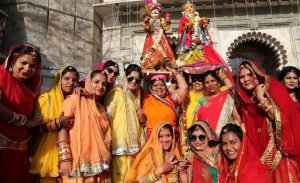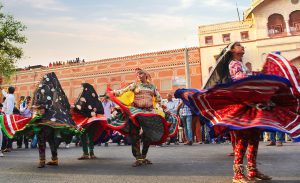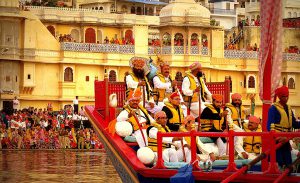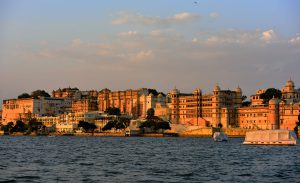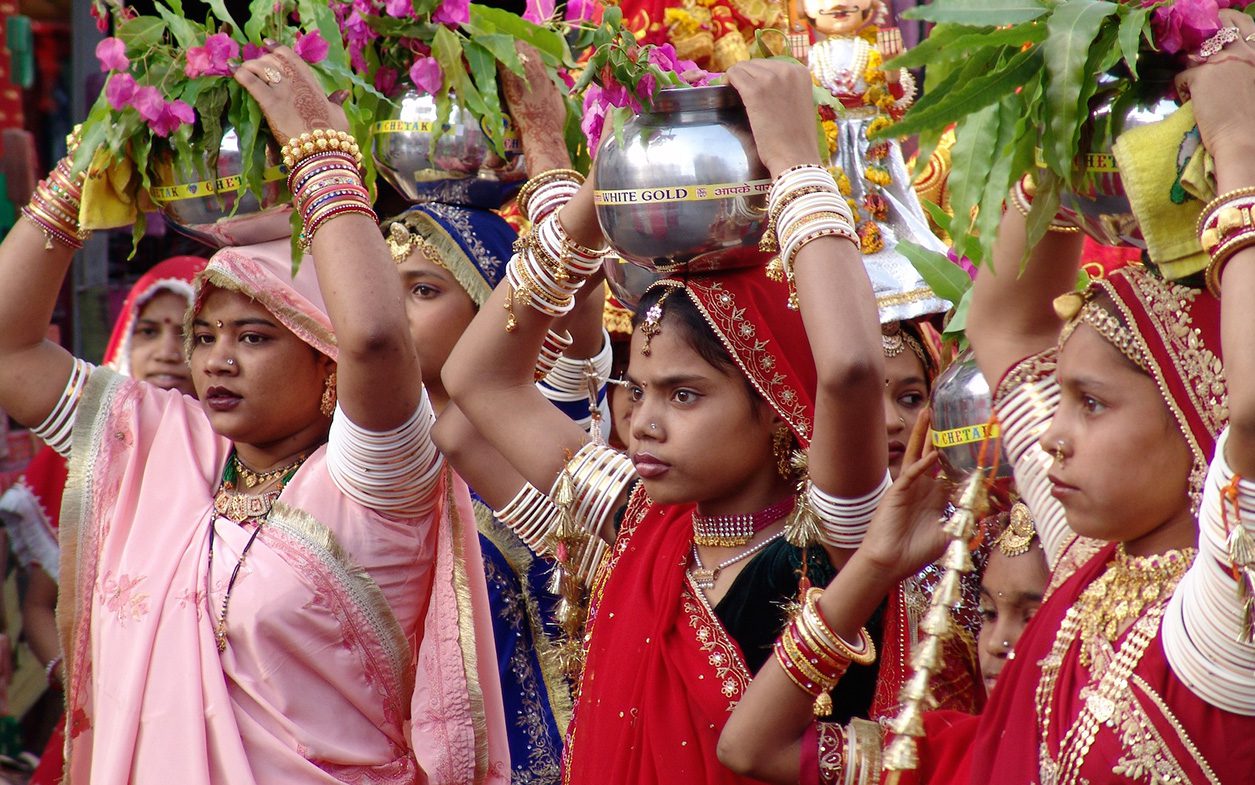
art of travel
Monthly Musing
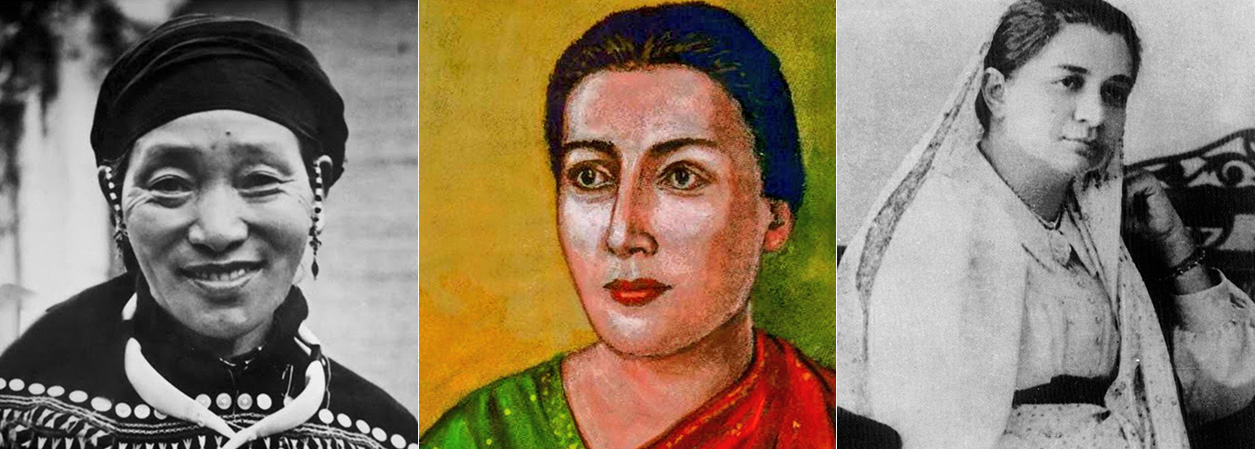
The theme for International Women’s Day, 8 March 2023 is, “DigitALL: Innovation and technology for gender equality”. This fantastic idea of bringing women and other marginalised groups into technology with the objective of creative transformative solutions reminds us of radio jockey Shikha Mandi from the village of Belpahari in West Bengal. She is the voice of her tribe, the Santhals, and hosts a radio programme called “Johar Jhargram” in her native Santhali language. Johar means Greetings and the Santhals are the third largest tribe in India that reside in the states of West Bengal, Bihar, Odisha, Jharkhand, and Assam. Shikha mesmerises hundreds of listeners through her programme on Radio Milan, a community radio, and in the process broke the stereotype and empowered girls in her village which is located 170 kms from Kolkata. Her journey from an ordinary tribal girl to a radio jockey wasn’t an easy one. Shikha was ignored, bullied and even stabbed. She is now the voice of the dying language of her tribe and upholds the fast vanishing unique treasures of her tribal culture.
Here are 5 more Indian women who broke stereotypes and created history –
1. Rani Gaidinliu (1915-1993) – Rani Gaidinliu was the spiritual and political leader of the Zeliangrong Naga tribe which is spread across the states of Assam, Manipur, and Nagaland in Northeast India. Inspired by Mahatma Gandhi, her non-cooperation movement in the 1930s made it extremely difficult for the British administration to function in the region. Rani Gaidinliu urged the people of the Naga community to stop paying taxes and to refuse to work for the British Government. Walking tortuous pathways across inaccessible mountains, she united the masses through her fiery speeches. Rani Gaidinliu was sentenced to life imprisonment in 1932 at the age of 16. She spent 15 years in jail and was finally released in 1947, after India’s independence. Prime Minister Jawaharlal Nehru’ gave Gaidinliu the title of ‘Rani’ (Queen) for her courage.
2. Tarabai Shinde (1850-1910) – Tarabai Shinde comes from an era when women in India were fighting for their right to education. Leading the charge were the Phules from Maharashtra, the husband-wife duo – Jyotirao and Savitribai – who opposed the caste system and favoured education for women. They were radicals of their time and Tarabai, who was home-schooled by her father, was a founding member of
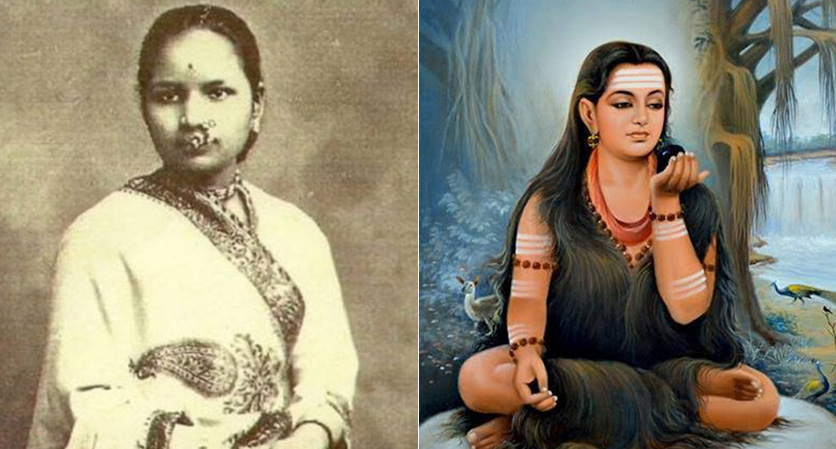
the organisation, Satyashodhak Samaj of the Phules. In 1882, Tarabai wrote a long essay titled “Stree-purush Tulana” (a comparison between men and women). It was in response to an article in a conservative newspaper about a young Brahmin widow who had been sentenced to death for murdering her illegitimate child. Upper-caste widows were forbidden to remarry and were vulnerable to sexual abuse. Tarabai’s hard-hitting essay based on her firsthand experience as a social worker opened a can of worms. Her essay, which had a print run of 500 copies, and shed a harsh light on the hypocrisy of the society, fell into oblivion at the behest of the powerful until it was revived more than 60 years after Tarabai’s death.
3. Bhikaiji Cama (1861-1936) – Born into an elite Parsi family in Bombay (now Mumbai), Bhikaiji Cama was married to a wealthy pro-British Parsi lawyer at the age of 20. She became involved in social work during the famine and plague of the 1890s, and went to London for treatment after she herself contracted the plague. There she met Indians like Dadabhai Naoroji who were opposed to British rule in India. This didn’t go down well with her husband who wanted her to give in writing that she would stay away from all anti-British activities. Bhikaiji Cama instead chose to go to Paris from where she sent pro-independence literature and guns concealed in toys to support the resistance that was smuggled into India through the French territory of Pondicherry. She was also instrumental in the design of an Indian flag that was first flown in Frankfurt in 1907. In her 70s, she returned to India due to her failing health, where she died. A staunch advocate of gender equality, Bhikaiji Cama donated a significant portion of her wealth to the Avabai Petit orphanage for girls in Bombay.
4. Dr. Rukhmabai (1864-1955) – Rukhmabai from Mumbai was the second Indian woman doctor who opposed the oppressive tradition of child marriage. She was married at age 11 to a man eight years her senior. When Rukhmabai reached puberty just a few months into her marriage, her husband wanted to consummate the marriage but her step-father, a well-known doctor opposed it. As a 12-year old Rukhmabai continued her studies and hobnobbed with the progressive minds of her parent’s social circle. When she was 20, her husband filed a case against her for conjugal rights. This high-profile court case sparked intense debates within society, in newspapers, and even in British women’s magazines. In 1887, citing Hindu laws, a British judge ruled in favour of her husband and asked Rukhmabai to go and live with her husband or face six months in jail. She said she would prefer to go to jail. This came as a shocker for the vast majority who blamed it on her education and declared her as a threat to the Hindu religion. Later she decided to appeal to Queen Victoria, who eventually overruled the court’s decision and declared the marriage null and void. Rukhmabai went on to study medicine at the London School of Medicine from where she graduated in 1894. She retired in 1929, at the age of 65 after serving as Chief Medical Officer in two women’s hospitals of Gujarat. The publicity and the debate generated by Rukhmabai’s court case led to the enactment of the “Age of Consent Act” in 1891, which changed the age of consent from 10 to 12 years across British India.
5. Akka Mahadevi (1130-1160) – Born nearly nine centuries ago in what is now Karnataka, Akka Mahadevi was a poet and an ardent devotee of Shiva. But she was completely against the caste system and the exclusive rights of the upper caste in matters related to religion. Akka Mahadevi composed around 430 poems, many of which reflect her ideas about home and marriage. In one, she talks about how she wanted time off from her husband to worship Shiva and interact with scholars. In another, she talks about how she abandoned her home in pursuit of Shiva. While the details of her marriage are sketchy, it is beyond doubt that Akka Mahadevi didn’t care at all about the institution of marriage and she made no bones about it. In one of her poems, she wrote:
“Take these husbands who die,
decay, and feed them
to your kitchen fires!”
Akka Mahadevi is an iconic figure in the vernacular literature of Karnataka and was lovingly referred to as Akka (elder sister) by her contemporaries.
What’s New
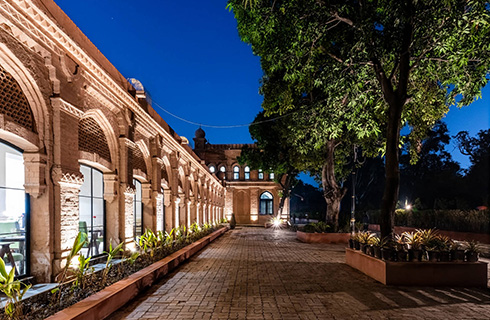
The Earth Resort, Amritsar
Located in the heart of the holy city Amritsar, The Earth by Wyndham is a celebration of life with unpretentious flair and conscious empathy for all of creation. The resort nurtures the roots of Amritsar’s culture and legacy as well as comfort and unhindered luxury. A calm and relaxing atmosphere is created by earthy colours and textures, and the choice of materials and techniques add to the eco-conscious and sustainability. All eighteen suites are mindfully refurbished with signature Earth style and in reverence to the tradition of the land and feature personalised amenities in addition to magnificent architecture. An organic garden in the resort provides the freshest produce for the farm-to-table experience while most of the produce comes from the fertile plains of Punjab.
Weaving it into an itinerary
Routing: Delhi – Amritsar – Dharamshala – Pragpur – Amb Andura – Anandpur Sahib – Delhi
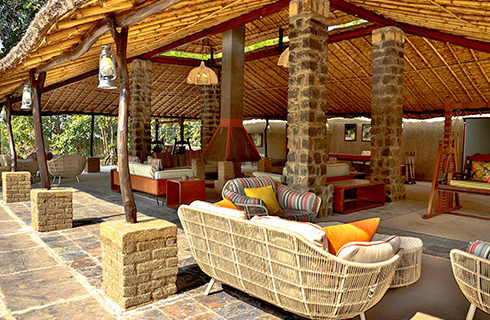
The UnTamed Bandhavgarh
The Ultimate Travelling Camp has expanded its footprints with the opening of its maiden property in Central India. A sophisticated canvas-top safari experience in the heart of Bandhavgarh, the UnTamed Bandhavgarh is an ideal base to explore the beauty of this forest. Vast and elegant, each tent has a large netted window and comes with en-suite bathrooms and a verandah allowing you to spend your evening in peaceful environs. Operating from October to June every year, this 10-tent property is located about 3.5 hours from Jabalpur airport, half an hours’ drive from Umaria, and close to the village of Tala.
Weaving it into an itinerary
Routing: Delhi – Agra – Orchha – Khajuraho (Sarai at Toria) – Bandhavgarh – Jabalpur – Delhi
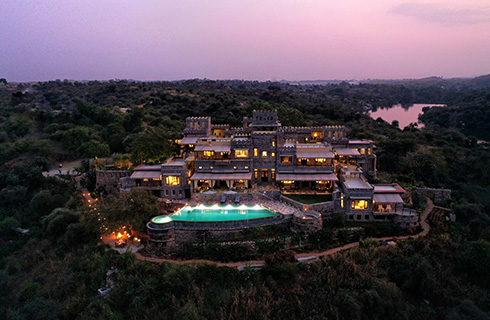
Chunda Shikar Oudi, Kheroda
A former hunting lodge of the nobility, Chunda Shikar Oudi serves as a refuge for those who prefer a blend of luxurious accommodations and exhilarating experiences. The boutique hotel is situated in Kheroda, 39 kilometres from the Udaipur Railway Station, and is surrounded by magnificent hills, scenic woodland, and a picturesque lake. Shikar Oudi offers ten exquisitely furnished accommodations with a tranquil lake view, delectable dining experiences, and flora-framed trails to explore the staggeringly beautiful setting. Enjoying wildlife safari, boating in a private lake, and angling in sunny afternoons to stargazing under the beautiful night sky, Shikar Oudi presents a wide array of activities for the adventurous soul inside you.
Weaving it into an itinerary
Routing: Delhi – Ramathra – Chauth Ka Barwara – Shahpura Bagh – Deogarh – Kheroda – Udaipur
Stories from India
Jewish Folk Songs of Kerala
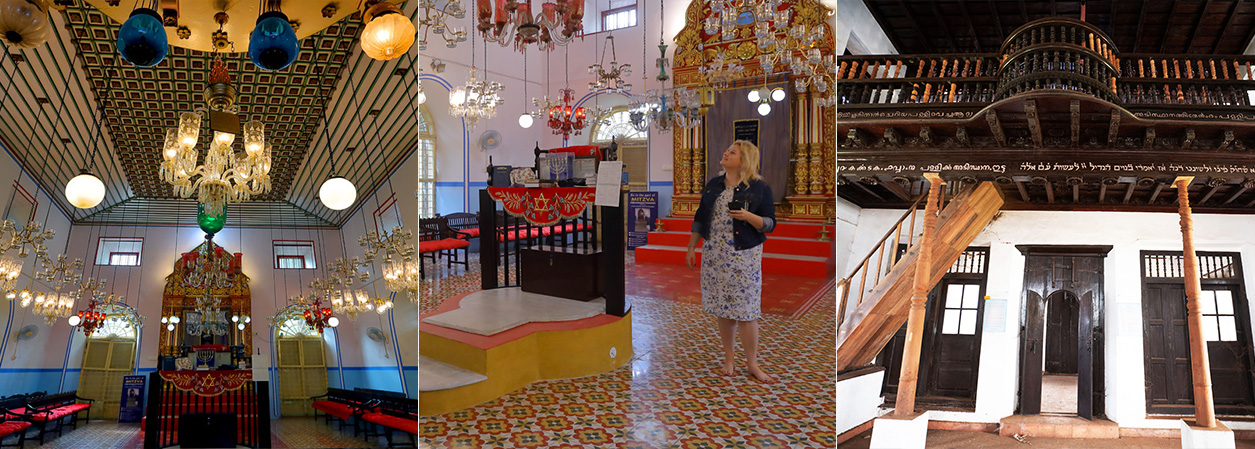
What makes Judaism in Kerala very unique is the role played by women. Unlike many traditional Jewish communities, the Jewish women of Kerala were educated, and sang together with men in the synagogues, at the Shabbat family table, and in functions such as marriages. In fact, there is an extensive repertoire of folk songs once sung exclusively by Jewish women of Kerala. They are now preserved in the Jewish Music Research Center at the Hebrew University in Israel. Apart from Biblical narratives, most of these songs in Malayalam, the local language of Kerala, are about how their ancestors arrived by sea and were given land and material by the King to build the synagogues. These songs, sung during weddings and festive occasions were composed and preserved in small notebooks. It was passed down by the mothers to their daughters when they got married. This speaks volumes about literacy in general and the high status of women in particular. 32 such notebooks are now preserved in the Ben-Zvi Institute of Jerusalem.
It is believed that the history of the Jews in Kerala is at least 2000 years old. A strong wave of Jewish migration to Kerala, some say, happened after the Romans attacked
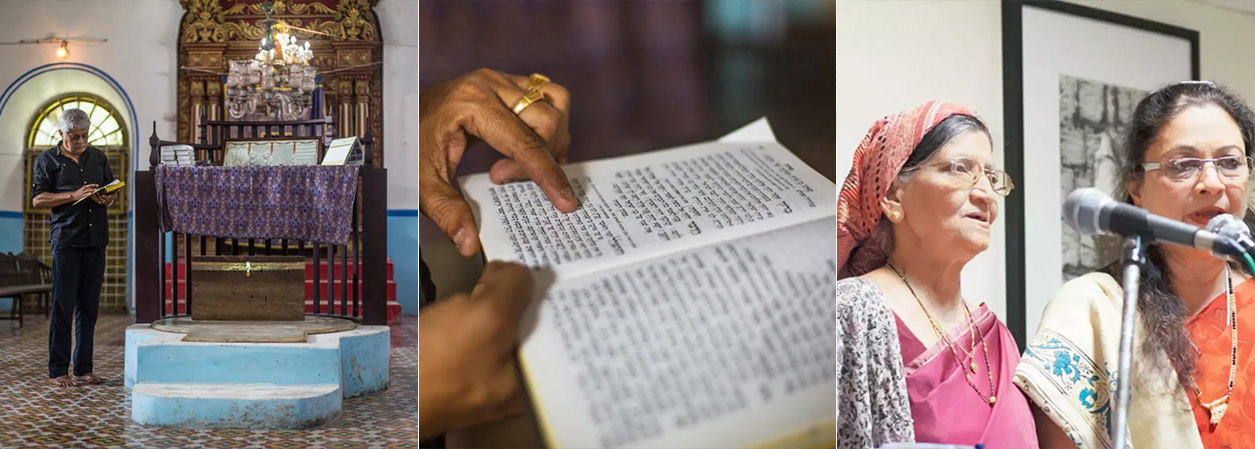
Jerusalem in 70 AD while others contend that the lucrative Spice Trade brought the Jews to Kerala who worked together with the Arabs who held sway on the maritime trade during the early days. The Cairo Geniza which is a collection of 400,000 Jewish documents talks about the Malabari Jews or Black Jews of Middle Eastern and North African origin in the Malabar Coast of North Kerala as early as the 9th century. They not only built synagogues but developed their own dialect which was a mix of Hebrew and Malayalam, the local language. Following the expulsion of the Jews from Iberia in 1492, there was another wave of migration and a handful of Jewish families reached Cochin in the 16th century who the locals called Paradesi (Foreigner) Jews or White Jews. It was the Paradesi Jews who built the Jewish synagogue in Mattancherry in Cochin which is the oldest surviving Synagogue in the British Commonwealth.
Whilst one can visit the Paradesi Synagogue during the city tour of Cochin, we recommend a full-day tour of Muzuris for those who want to deep dive into Kerala’s Jewish History. Muzuris, also known as Jerusalem of the East, is an ancient harbor that is said to be nearly 3000 years old. It was home to the first Jewish (961 BC), Christian (52 AD), and Islam (629 AD) settlements in India. The archaeological and historical data gathered on Muzuris provides evidence to show that it was a veritable business and cultural centre, with far-reaching international associations. Presently Kodungallur, located 19 Miles North of Cochin, this ancient port is said to have been first occupied around 1000 BC and continued to be populated till the 13th century. The full-day tour of Muzuris is a fantastic insight into what is literally the cradle of several religions. Apart from the first Jews of India, this is the port where the Apostle of Jesus Christ, St Thomas is said to have landed bringing Christianity to India, at the same time it travelled to Europe. It is also the site of Cheraman Mosque, the first mosque in India which was built when Prophet Mohammed was still alive. In addition, it houses a famous Hindu temple, dedicated to the Goddess Bhagavathy.
Sustainability and Us
The Women of Insha-E-Noor

Insha-E-Noor is a group of women’s self-help groups from the 13th century Hazrat Nizamuddin Basti, New Delhi. They create beautiful, hand crafted textile and paper products that draw inspiration from the rich cultural and architectural heritage of the Humayun’s Tomb.
Insha-E-Noor meaning “creation of light” defines the spirit of this not-for-profit. It is a celebration of ideas, people, culture and a rich heritage. It represents a constant drive to create, innovate and evolve.
The Insha-E-Noor family built by strong women wants to make a difference not only to their own lives but also to their community. It is a part Nizamuddin Urban Renewal project by the Aga Khan Foundation whose aim is improve the quality of life of the people living in the Hazrat Nizamuddin Basti through projects related to women’s livelihoods health, and education.
The women of Insha-E-Noor make beautiful hand-crafted text le and paper products such as notebooks, lampshades, gift boxes, coasters, wall hangings, children’s clothes, crocheted pouches, toys, fashion accessories, bags, scarves, baby’s blankets and much more. Their products draw their design cues and motifs from the beauty and vibrancy of the Humayun’s Tomb, using techniques such as paper cutting craft of Sanjhi, crochet, embroidery.
Write to your relationship manager to know more about our exclusive tour focused around the Humayun’s Tomb and Nizamuddin Urban Renewal project by the Aga Khan Foundation.
Explore
THROUGH HER EYES – FIXED DEPARTURE
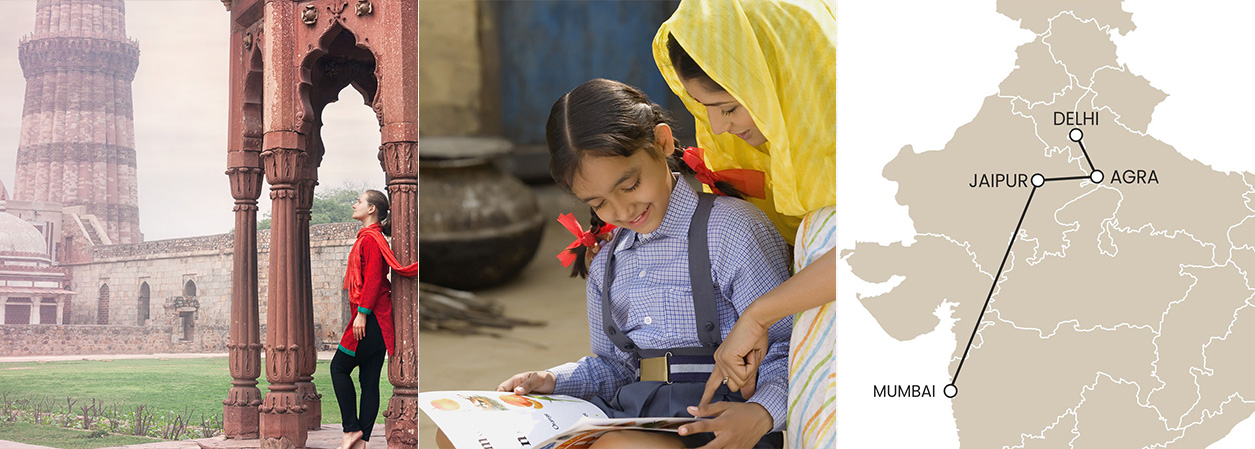
Discover India and her beautiful culture through the eyes of two women who have deep reverence and love for it. See a different aspect of this colourful country unfurl before your eyes as you embark on a journey through some of the most interesting destinations in the country. This tour is curated to give you an intimate glance into the heritage, art, architecture, traditions, and cuisines of India that you will not find in any tourist guidebook. Your tour is led by two vivacious women with years of experience in travel, heritage, and art of India and abroad. They are passionate about travel and they will enchant you with interesting anecdotes from their own experiences. There is no lull in excitement when you travel with us!
Itinerary Routing: Delhi – Agra – Jaipur – Mumbai
Dates: September 10-20, 2024
- Enjoy the company of your Tour Host Lovleen Sagar who is an avid traveller, a history enthusiast, a master of bespoke experiences, and a people person.
- Seema Srivastava, the Tour Leader of the group who is an artist, an art historian, a cultural theorist, and a professor will enlighten you about the ‘Art and Culture of India’ on the tour.
- Enjoy our Wedding Tour in Delhi to gain an insight into the must-do lists for the bride and groom-to-be.
- Explore the local bazaars of Jaipur to see craftsmen busy in their workshops, producing and selling fine forms of local arts and crafts.
- Try your hands on Miniature Painting at the residence of a miniature painter in Jaipur – a timeless world of art, depicted on an impossibly small scale with incredible detailing.
- Enjoy a cooking demonstration in Jaipur at a unique homestay where the hosts make you feel at home with their sense of humour.
- Get up at the crack of dawn in Mumbai for an exclusive peek into the underbelly of the city, and have an insight into what makes this magnificent city tick.
- In Mumbai go for a hands-on ‘Zine Workshop’ facilitated by a Zine artist. Learn about the concept, its evolution, and carry the Zine that you have created as a souvenir back home.
- Shake a leg in a Bollywood dance workshop to get a glimpse of the Hindi film industry of the country.
- In Mumbai enjoy a cocktail-making workshop at an urban gastro-pub with the super creative bar team of one of the city’s most celebrated restaurants.
- Savour the thrill of a Dabbawallahs-style lunch just like the locals do.
Festivals to look out for
Gangaur, Udaipur

24 March, 2023
Gangaur is a festival of spring, harvest and marital fidelity celebrated all over Rajasthan. But it is particularly impressive in Udaipur with the Lake Pichola as the backdrop of the festival. It is a time for women in Rajasthan to dress up in their best clothes and participate in the festival dedicated to the divine couple of Lord Shiva and Goddess Gauri. A vow is observed by married women for marital bliss and young girls for ideal husband. Women carry clay idols of Lord Isar (Shiva) and Goddess Gauri (Parvati) in a ceremonial procession singing Gangaur songs, starting at Jagdish Chowk and ending in Gangaur Ghat by the Lake Pichola, where they place the idols on boats. The festival culminates with traditional artists performing folk dances and impressive fireworks.
RESOURCES
SITE LINKS
CONTACT US
+ 91 (124) 4563000
Tower B, Delta Square, M.G. Road, Sector 25, Gurgaon - 122001, Haryana, National Capital Region of Delhi, India


